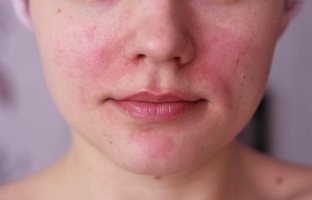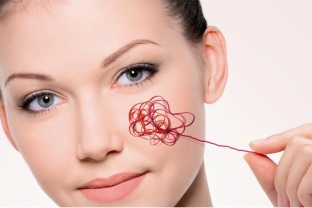Absolutely every person is familiar with such a phenomenon as reddening of the skin of the face. Whether it's a skin reaction to a new cream, a winter frost, or an unexpected compliment – redness often does not cause much excitement. The rush of blood to the face is quickly replaced by the natural color of the skin, and this is absolutely normal. Indeed, redness of the skin of the face – this is often a physiological process, but in some cases it can be a cause for concern. Too bright coloring and frequent flushes to the face can be a signal of an incipient pathological process. How to recognize it in time and what to do in such a situation – tells estet-portal.com.
Redness of the skin of the face as a sign of a pathological process
Since reddening of the skin of the face, even if it is too intense and frequent, often does not cause concern to the patient, it is the beautician who can be the first to recognize the beginning pathological process.
The intense reaction of the vessels of the skin of the face to various influences should cause the specialist to be alert.
The first output that suggests – the doctor is dealing with sensitive skin, which definitely requires special care. What should it be – depends, first of all, on the type of reddening of the skin of the face, as well as on the reasons that provoked this condition.
Redness of the skin of the face:
- main types of pathological redness of the facial skin;
- causes of pathological reddening of the skin of the face;
- beautician's recommendations for pathological reddening of the face.
The main types of pathological reddening of the skin of the face
All types of redness of the facial skin can be divided according to the stages of this pathological process:
- First stage – this is pre-rosacea or intermittent redness caused by a rush of blood to the face. Characterized by intense redness and frequent flushes of blood;
- Second stage – erythematous, which is characterized by the presence of constant redness on the skin of the face. Can be of two types:
- erythrosis – deep, uniform red complexion due to dilation of microscopic capillaries;
- rosacea – redness due to dilation of larger vessels visible to the naked eye;

- Third stage – papulo-pustular. Characterized by the presence of papules – local red elevations above the surface of the skin, as well as pustules with purulent contents;
- Fourth stage – this is rhinophyma or the so-called "wine nose". This is a fairly rare skin condition in which there is an expansion of the sebaceous glands, an overgrowth of connective tissue and the formation of soft, bright red knots at the tip of the nose.
Causes of pathological reddening of the skin of the face
The main causes of different types of pathological reddening of the skin of the face can be divided into several groups:
- vascular anomalies – redness is promoted by impaired blood circulation in the veins of the face, vascular hypersensitivity and increased activity of VEGF-vascular endothelial growth factor;

- inflammatory processes on the skin of the face – we are talking even about those processes that can be almost imperceptible, but are clearly visualized under microscopy;
- infectious processes: main pathogens – demodex mite, propionibacterium acne, and staphylococcus aureus;
- neurological factors – constant stress and excessive stress on the nervous system can also cause pathological redness;
- solar radiation – Excess UV light also contributes to facial redness.
Cosmetologist's recommendations for pathological reddening of the skin of the face
What should a cosmetologist do if he diagnoses one or another type of pathological reddening of the skin in his patient. The doctor's recommendations may be as follows:
- the patient should avoid eating too spicy foods and alcoholic beverages;
- should limit exposure to the sun and be sure to wear sunscreen before going outside;
- the skin needs special care: it is important to use cosmetics with gentle formulations and vascular-strengthening ingredients;
- salon care involves the use of various care procedures, drainage massage, physiotherapy procedures based on exposure to ultrasound or various types of currents. Sensitive skin with redness is best completed with the application of collagen or alginate oils with a soothing effect;
- Medicated therapy includes venotonic, drainage and vasoconstrictive drugs, as well as phototherapy and laser correction procedures.
Redness of the skin of the face – this is a condition that requires special attention and timely implementation of corrective procedures.
Estet-portal.com thanks you for your attention. Read other materials about rosacea and rosacea on the website in the "Cosmetology" section.







Add a comment